Introduction
Case
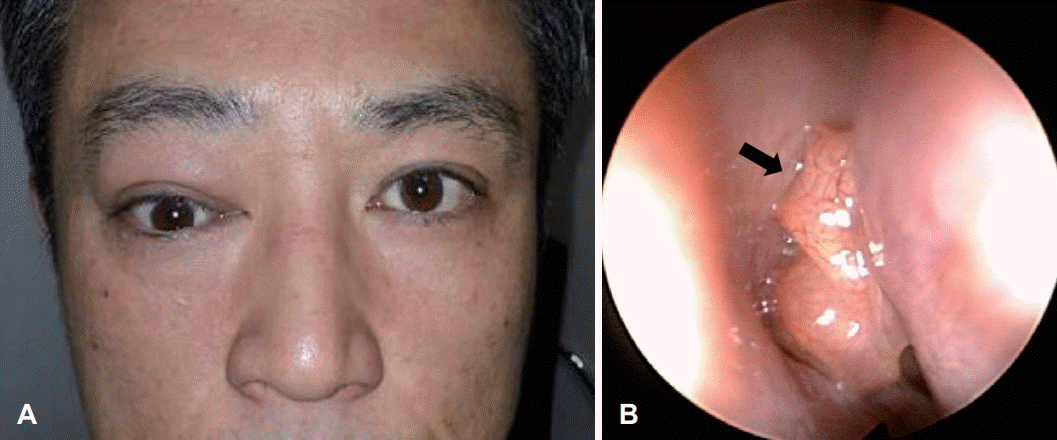 | Fig. 1.Preoperative profile and endoscopic finding. A: Frontal view shows downward deviation and proptosis of the right orbit. B: Several polypoid masses with mucopurulent discharge in the right middle meatus are shown in nasal endoscopy (arrow). |
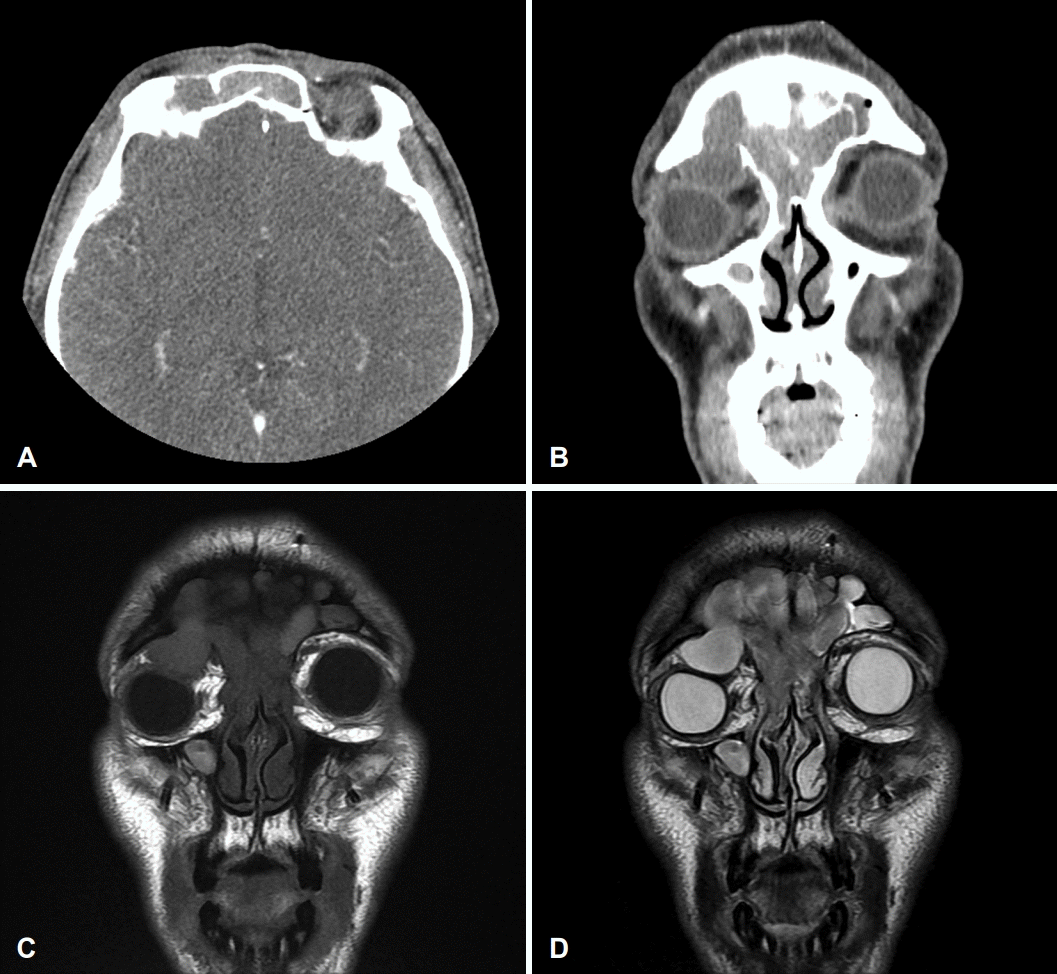 | Fig. 2.Preoperative paranasal sinus CT and MRI. Axial (A) and coronal (B) images of CT scan show well defined unilocular cystic mass in the right superior intaorbital extraconal space and soft tissue density in frontal sinus. T1-weighted (C) and T2-weighted (D) MRI show non-enhancing right superior extraconal mass with low signal intensity, which is presumed to be a mucocele. And heterogeneously enhancing lesion in frontoethmoid sinuses have low and intermediate signal intensity with possible bony erosion, respectively. |
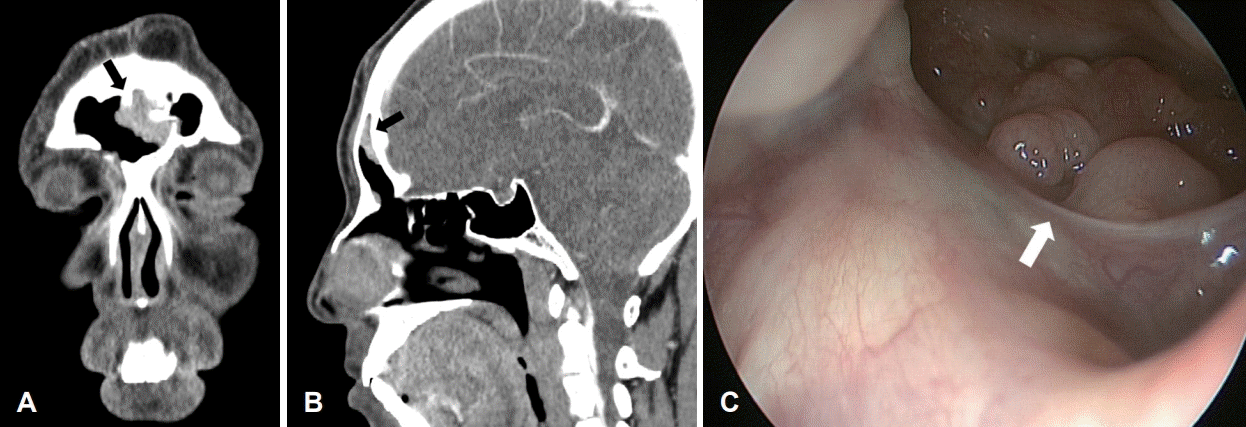 | Fig. 3.Paranasal sinus CT and endoscopic finding at postoperative 20 months. A and B: Coronal (A) and sagittal (B) images of CT scan show soft tissue density in superior posterior wall of frontal sinus (black arrows). C: Nasal endoscopy shows multiple polypoid masses were observed in superior and posterior wall of the right fontal sinus (white arrow). |
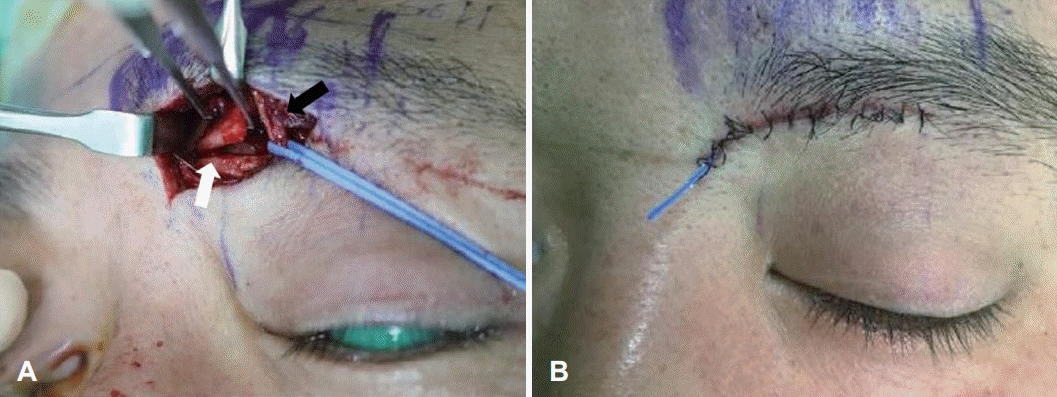 | Fig. 4.Intraopeative findings of mini osteoplastic flap. A: An incision is made along inferior margin of left eyebrow. The frontal sinus is exposed when the mini osteoplastic flap (white arrow) is removed while identifying supratrochlear neurovascular bundles (black arrow). B: The incision site is closed after removal of remaining lesions in frontal sinus. |




 PDF
PDF Citation
Citation Print
Print



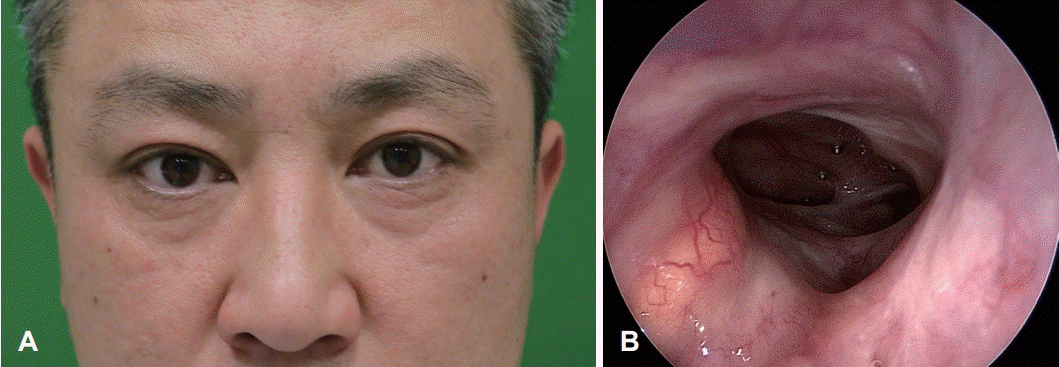
 XML Download
XML Download